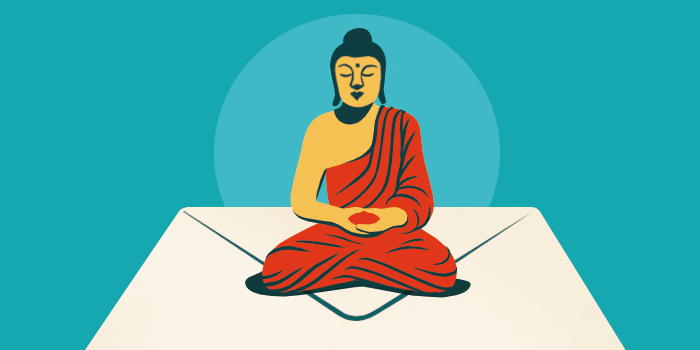What is Buddhist tantra?
Think tantra is all about sex? Think again! Tantra is an ancient Indian religious movement that seeks to harness a wide variety of experiences and mental and physical energies for use on the path to enlightenment. Tantra practitioners believe that by engaging in these esoteric practices under the guidance of a teacher one can attain awakening within just one lifetime. Tantric practices are numerous but include working with sound through mantra (sacred words and phrases), with gesture through mudra (ritualized sacred hand gestures), with sight through visualizations and mandalas (diagrams of the universe), and with vital energies through meditation and yoga.
Tantra literally means “thread,” “loom,” or “warp,” and in the Vajrayana view, tantra texts weave together “strands” of sutras. Vajrayana holds that the tantras, like the sutras, were taught by the historical Buddha in his tantric form (known as Vajradhara) or by other enlightened beings. Theravada, on the other hand, considers the tantras to be later additions and rejects them. Historically, Buddhist tantras probably first appeared in India between the 3rd and 6th centuries CE, and new tantras continued to appear through the end of the first millennium, eventually spreading to many parts of Asia. Today, Buddhist tantra is primarily found in all of the Tibetan lineages and also in Japanese Buddhism, especially Shingon. Tantric texts and practices, some with considerable resemblance to Buddhist versions, are also found in Hinduism.
Tantra is a method for realizing the ultimate nature of reality, especially when “reality” is understood in terms of the nature of mind itself. The basic idea is that our suffering arises from our misapprehension of reality: we falsely take phenomena that are “empty” of any reality to be objectively real, separate, and unchanging. Tantra, however, is not just about seeing the nature of reality. It is also about the full manifestation of one’s buddhanature, our intrinsic potential to become buddhas ourselves.
Tantric practice involves various stages, some that make use of elaborate rituals and visualizations. An example is the practice of Chenrezig (Skt. Avalokiteshvara) the bodhisattva of compassion. One begins by visualizing Chenrezig as a figure made of light above one’s head. After supplicating Chenrezig, one visualizes themself as Chenrezig, seeing their mind as identical to the deity’s. In this way, a practitioner is said to “take the result as the path,” which means that one identifies directly with buddhas and bodhisattvas, visualizing oneself as the deity (yidam)—a key aspect of tantra. The meditation closes with the deity dissolving into emptiness, allowing the mind to rest in its own nature.
This style of practice requires a subtle and nuanced view of oneself and the world, so it is entered gradually. Known as guru yoga, it begins with forming a bond (Skt., samaya) with a teacher and completing extensive ngondro (preliminary, or foundational) practices. The teacher then gives the student empowerment, or authorization to visualize oneself as the meditation deity, as well as authorization to recite the text (reading transmission) and practical instructions on how to meditate on the yidam.
Although the samaya bond urges the student to maintain a pure view, or “sacred outlook” of the teacher and fellow disciples, the ultimate samaya is to maintain an awareness of the true nature of one’s mind and surroundings. It is this continual awareness that dispels confusion and fosters awakening.

Tricycle is more than a magazine
Gain access to the best in sprititual film, our growing collection of e-books, and monthly talks, plus our 25-year archive
Subscribe now